Simple Pici Carbonara Recipe
Pici carbonara is a rustic twist on the classic roman pasta dish. It combines the simplicity of carbonara sauce with the charm of thick, hand-rolled pici pasta. Perfect for anyone who loves a quick, hearty and satisfying meal. The rich and creamy sauce comes together in less than 15 minutes, using only eggs, pecorino, black pepper and crispy guanciale.
Ingredients and Tools You’ll Need
Step-by-Step Instructions
Step 1
Make the pici pasta: Pile the flour on your work surface and create a well in the center. Pour the water and olive oil into the well. Using a fork, start mixing the flour and water in the middle until it forms a thick paste. Then, fold in the remaining flour and bring everything together into a shaggy dough. Knead for at least 10 minutes. Cover the dough with plastic wrap and let it rest for at least 30 minutes at room temperature.
Roll the dough out to an even thickness of about 5 mm. Cut it into strips and then roll them out into thin, spaghetti-like strands. Here you can find more detailed instructions to make homemade pici pasta.
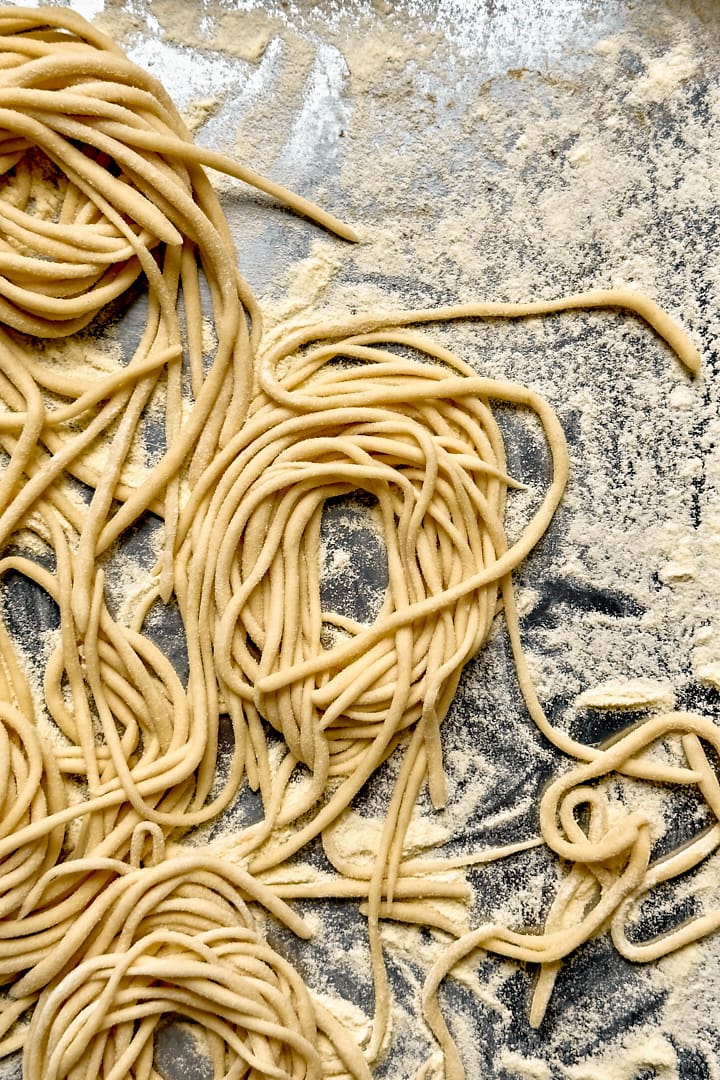
Step 2
Prepare the ingredients for the sauce: The guanciale usually has one side that’s hard and tasteless and one side that’s cured with pepper and herbs. Cut the hard skin off and discard it (but leave the side with the peppercorns on). Then, cut it into slices (1/2 cm – 1 cm) and the slices into thin strips. It’s better to cut strips rather than cubes. This ensures that you have pieces with equal amounts of meat and fat. If you cut cubes, you’ll end up with pieces that have fat only. Finely grate the pecorino cheese. In a small mixing bowl, combine the whole egg, yolks, finely grated pecorino and a good amount of freshly cracked black pepper. Mix well until it turns into a smooth paste.
Step 3
Cook the guanciale: Bring a large pot of water to a rolling boil for the pasta. Meanwhile, fry the guanciale in a skillet over medium heat until crispy and golden on the outside but still soft and tender on the inside. Don’t use any additional oil for this step. The guanciale is fat enough and will render out the fat while cooking. Make sure to stir every now and then and don’t it let it brown too much. When it’s crispy and golden, remove it from the pan with a slotted spoon and set it aside on a plate. Reserve the rendered fat in the pan. This is important for the flavor and richness of the sauce. Turn the heat to the lowest setting.
Step 4
Cook the pasta: Once the water is boiling, add salt and cook the pici for about 2-3 minutes, until al dente (if you use store-bought pasta, cook it according to package instructions). Reserve a cup of the pasta water. Drain the pasta and transfer it directly to the pan with the guanciale fat. Add a splash of cooking water, toss, and stir. Then turn off the heat.
Step 5
Add the sauce: Gradually, add a bit of the remaining pasta water (about 1/4 cup) to the egg-cheese mixture, while stirring constantly. The goal is to temper the eggs and turn the mixture into a smooth, silky sauce. This will slowly raise the temperature of the eggs to stabilize them and prevents them from curdling or scrambling when you mix them with the hot pasta.
Take the skillet off the heat and pour the egg mixture over the pasta. Toss and stir until the sauce has slightly thickened (it should be creamy, but not runny). The residual heat of the pan and the paste will gently cook the eggs and melt the cheese. Stir through the guanciale (or sprinkle it over the pasta shortly before serving). If the sauce seems a little dry, add a bit more pasta water, if it’s runny, keep tossing and stirring, until it thickens. The goal is a smooth, velvety sauce that clings to the pasta and lightly coats every strand.
Step 6
Serve: Serve it immediately with sprinkled pecorino and black pepper on top. Carbonara tastes best as fresh as possible. Enjoy!
Tips & Tricks
Common Questions About Pasta Carbonara
More Pasta Recipes You May Like:
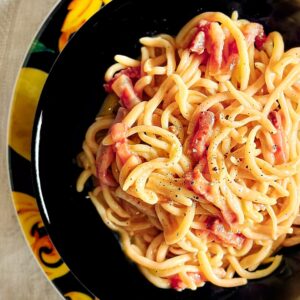
Simple Pici Carbonara Recipe
Equipment
- Pasta pan – to toss the pasta with the sauce
Ingredients
For the pici pasta:
- 200 g flour – Tipo 00
- 100 g water – warm
- 10 g olive oil
For the carbonara sauce:
- 1 whole egg
- 2 egg yolks
- 80 g guanciale – cut into thin strips
- 60 g pecorino romano – finely grated
- Black pepper
- Salt – for the pasta water
Instructions
- Make the pici pasta: Pile the flour on your work surface and create a well in the center. Pour the water and olive oil into the well. Using a fork tart mixing the flour and water in the middle until it forms a thick paste. Then fold in the remaining flour and bring everything together into a shaggy dough. Knead for at least 10 minutes. Cover the dough with plastic wrap and let it rest for at least 30 minutes at room temperature.Roll the dough out to an even thickness of about 5 mm. Cut it into strips and then roll them out into thin, spaghetti-like strands. Follow this link for more detailed instructions to make homemade pici.
- Prepare the ingredients for the sauce: The guanciale usually has one side that’s hard and tasteless and one side that’s cured with pepper and herbs. Cut the hard skin off and discard it (but leave the side with the peppercorns on). Then, cut it into slices (1/2 cm – 1 cm) and the slices into thin strips. It’s better to cut strips rather than cubes. This ensures that you have pieces with equal amounts of meat and fat. If you cut cubes you’ll end up with pieces that are fat only. Finely grate the pecorino cheese. In a small mixing bowl, combine the whole egg, yolks, finely grated pecorino and a good amount of freshly cracked black pepper. Mix well until it turns into a smooth paste.
- Cook the guanciale: Bring a large pot of water to a rolling boil. Meanwhile, fry the guanciale in a skillet over medium heat until crispy and golden on the outside and tender on the inside. Don’t use any additional oil for this step. The guanciale is fat enough and will render out the fat while cooking. Make sure to stir every now and then and don’t it let it brown too much. When it’s crispy golden, remove it from the pan with a slotted spoon and set it aside on a plate. Reserve the rendered fat in the pan. This is important for the flavor and richness of the sauce. Turn the heat to the lowest setting.
- Cook the pasta: Once the water is boiling, add salt and cook the pici for about 2-3 minutes, until al dente (if you use store-bought pasta cook it according to package instructions). Reserve a cup of cooking water. Drain the pasta and transfer it directly to the pan with the guanciale fat. Add a splash of cooking water, toss and stir. Then turn off the heat.
- Add the sauce: Gradually add a bit of the remaining pasta water (about 1/4 cup) to the egg-cheese mixture, while stirring constantly. Don’t use too much water. You want to turn it into a smooth cream, but don’t make it watery. The goal is to temper the eggs and turn the mixture into a smooth, silky sauce. This will slowly raise the temperature of the eggs to stabilize them. This prevents them from curdling or scrambling when you mix them with the hot pasta.Take the skillet off the heat and pour the egg mixture over the pasta. Toss and stir until the sauce has slightly thickened (it should be creamy not not runny). The residual heat of the pasta and the pan will gently cook the eggs and melt the cheese. Stir through the guanciale (or sprinkle it over the pasta shortly before serving). If the sauce seems a little dry, add a bit more pasta water, if it’s runny, keep tossing and stirring, until it thickens. The goal is a smooth, velvety sauce that clings to the pasta and lightly coats every strand.
- Serve: Serve it immediately with sprinkled pecorino and black pepper on top. Carbonara tastes best as fresh as possible. Enjoy!
Video
@notjustfood_blog Let‘s make carbonara with fresh, hand-rolled pici pasta 🍝 #carbonara #pastatiktok #pastarecipe
♬ Jackie Brown – Rhym 🫀

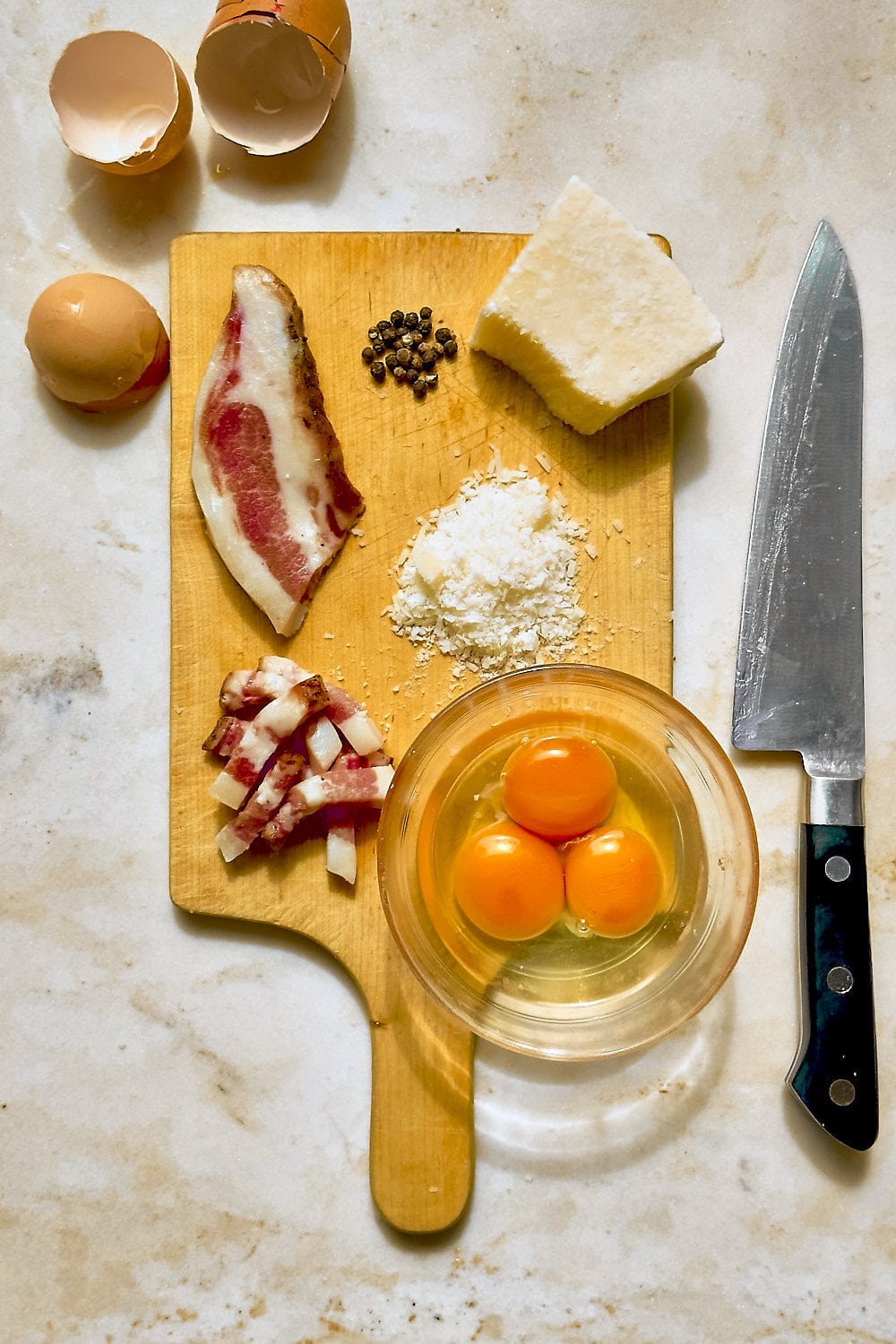
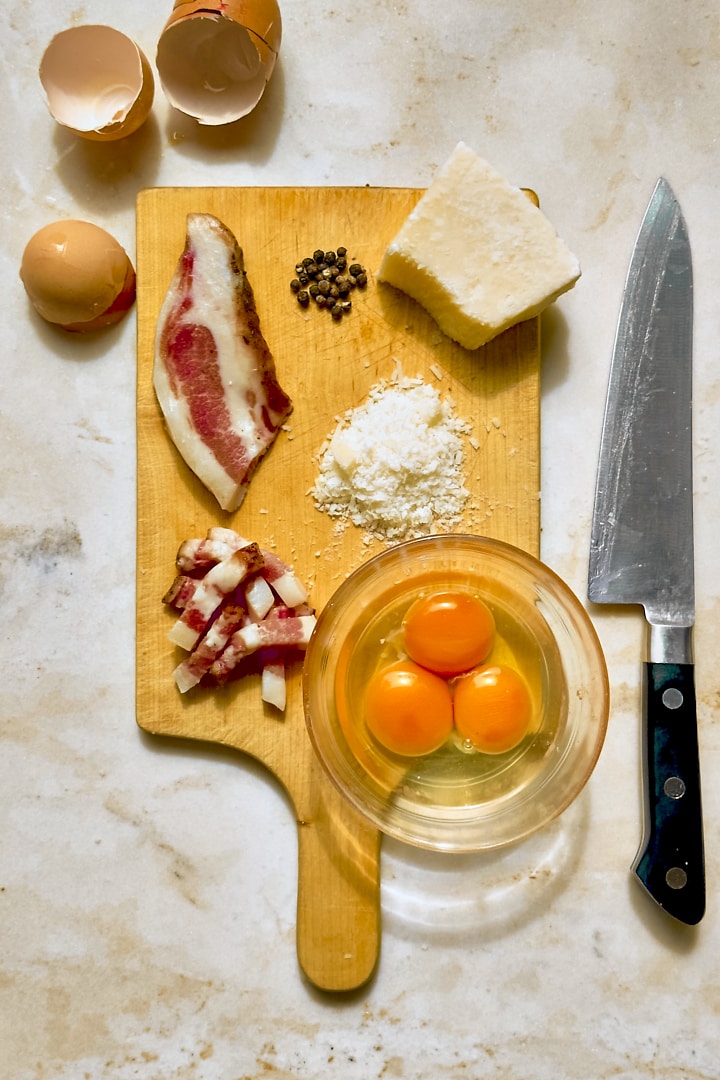
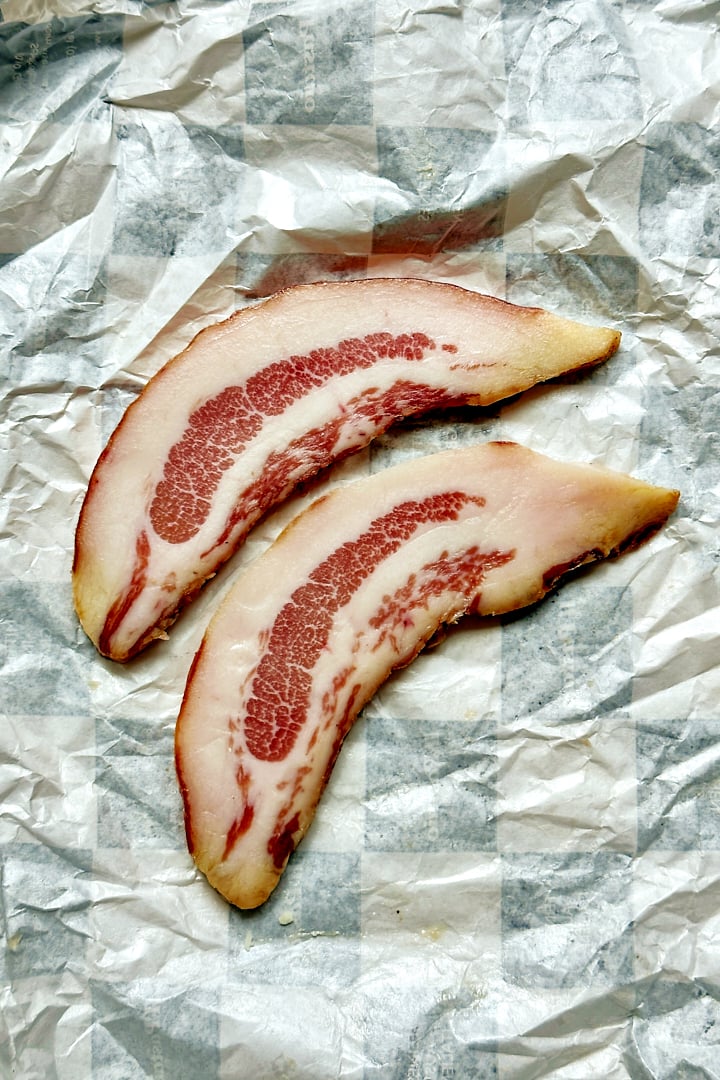

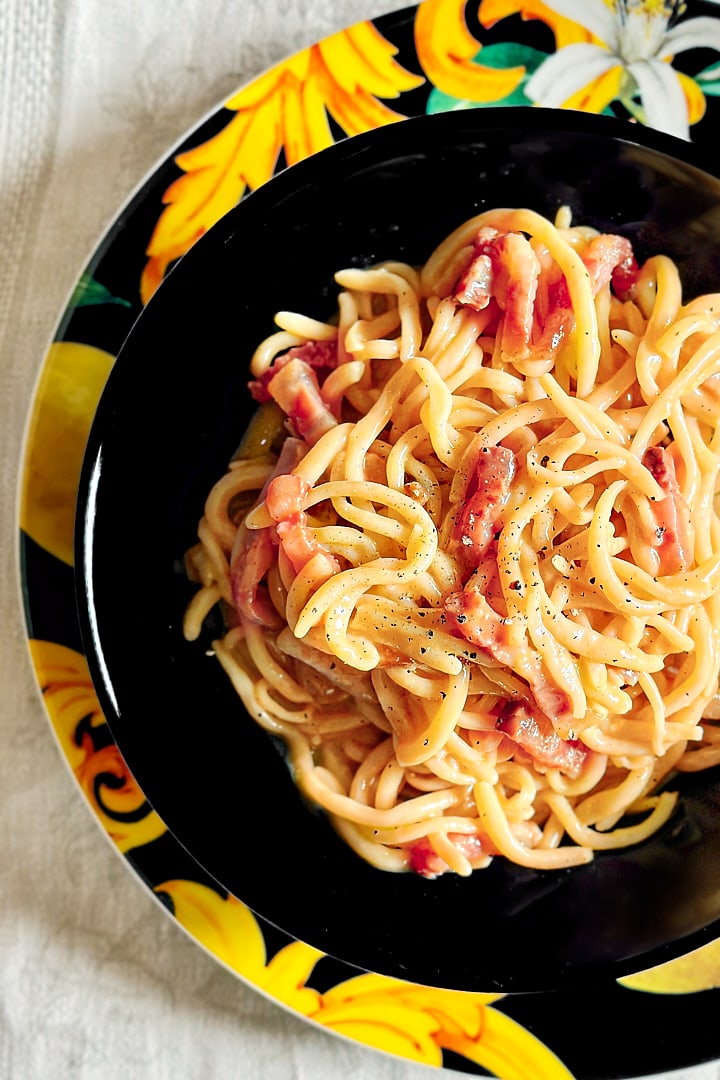
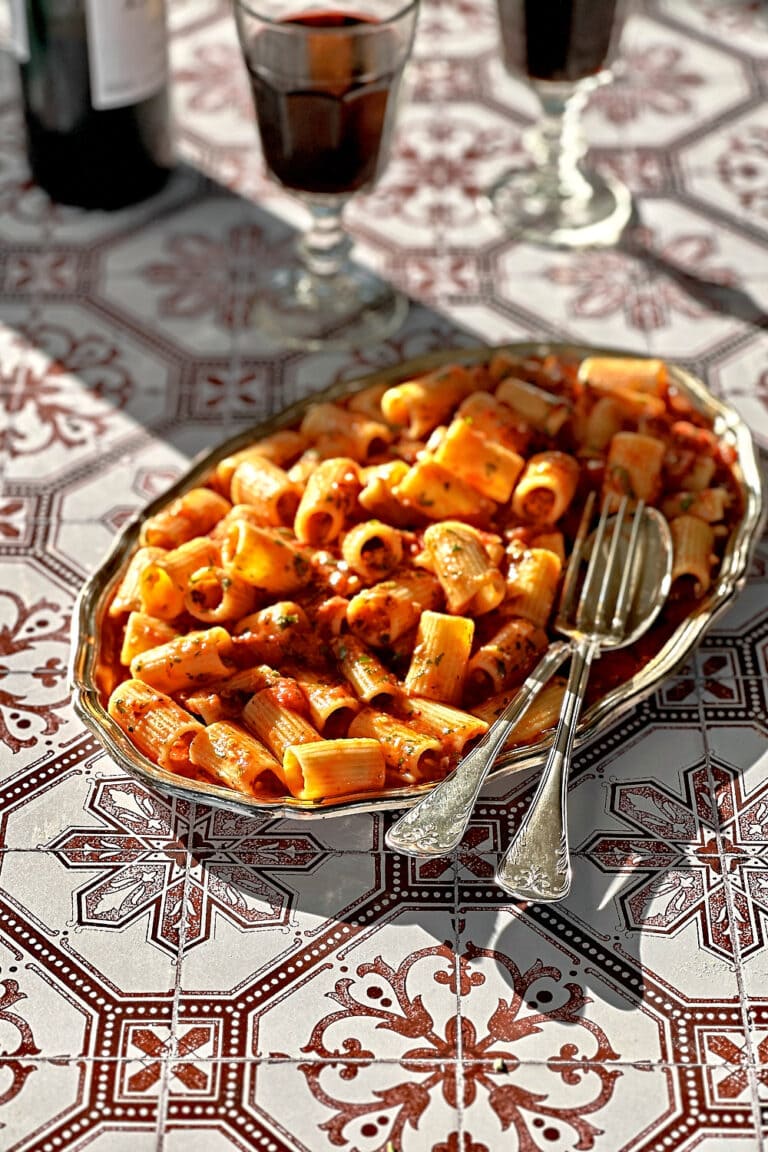
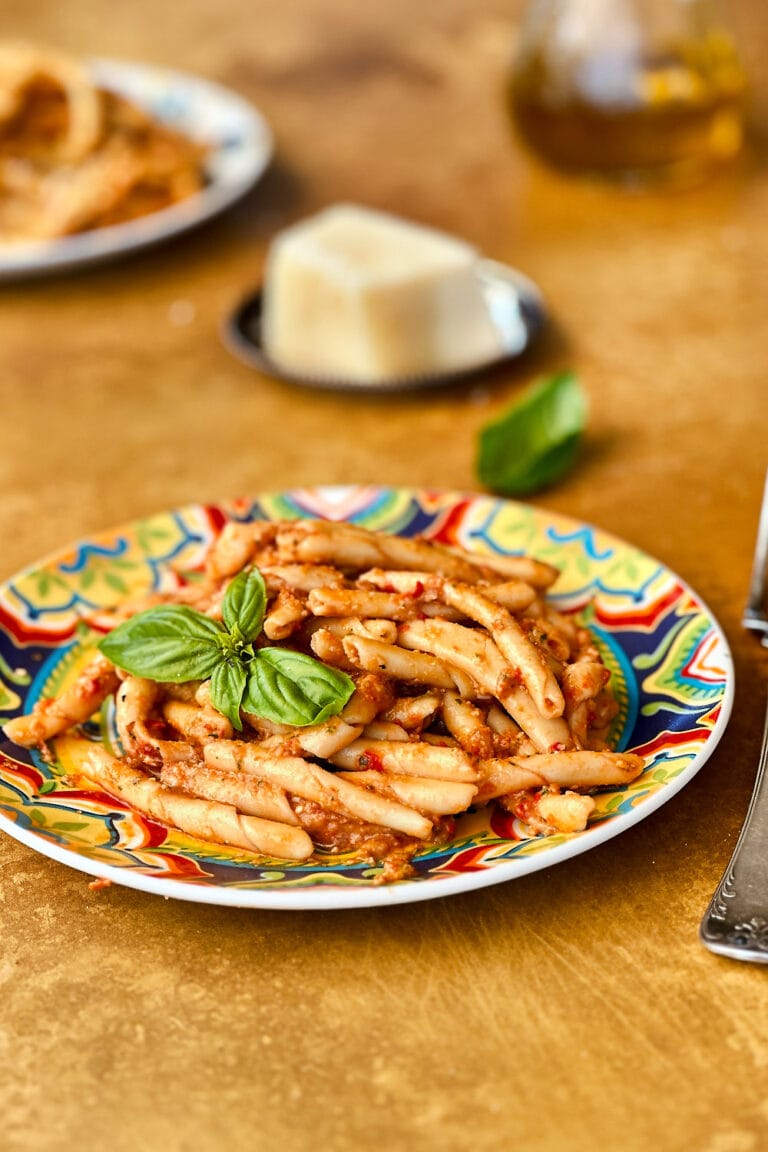
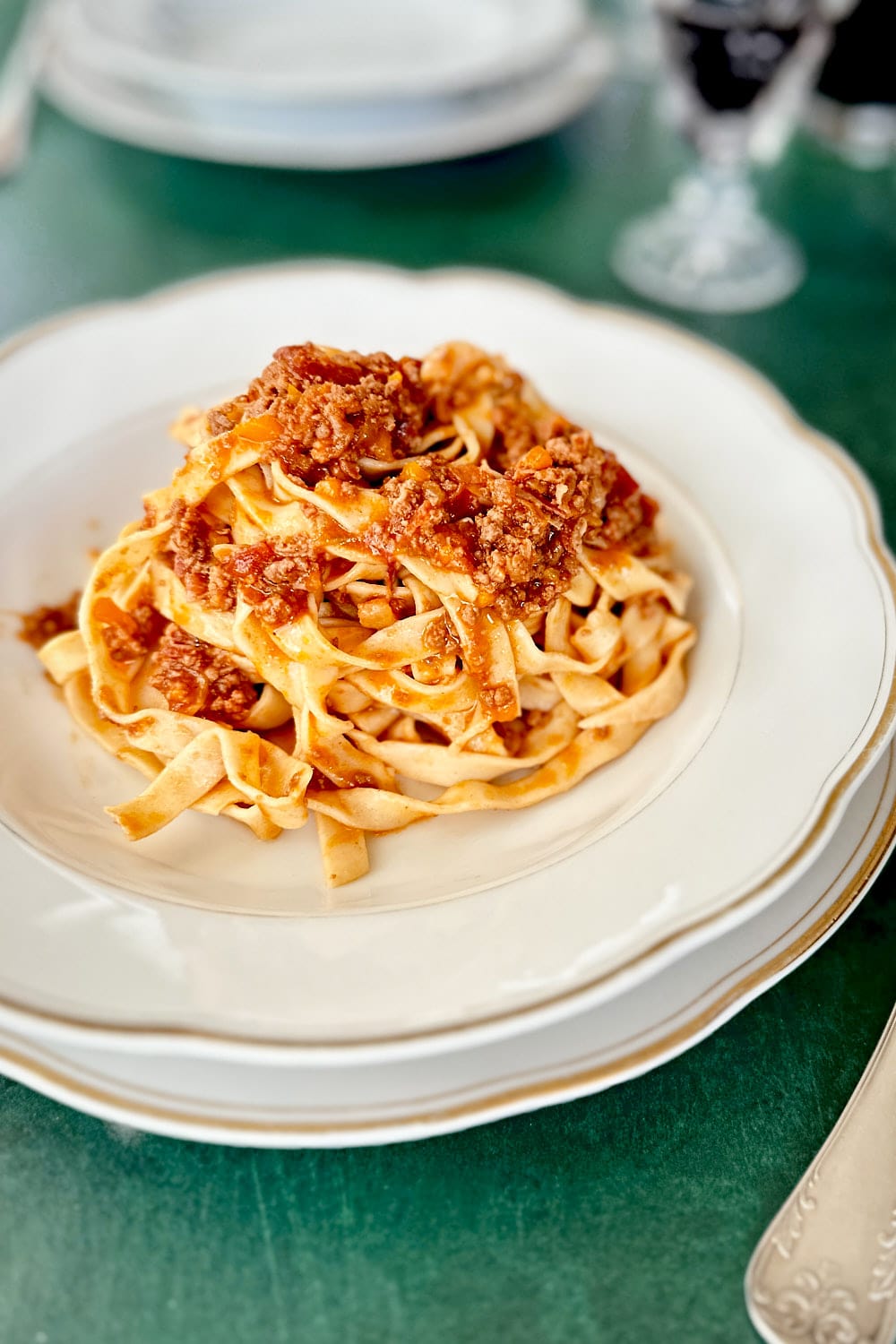
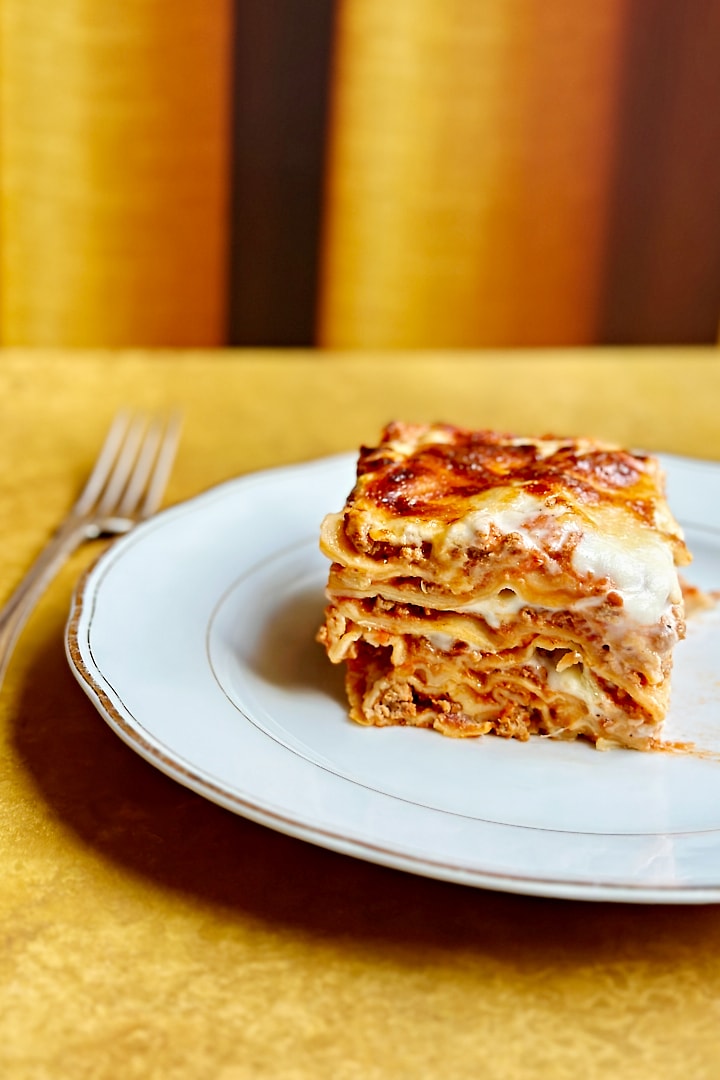
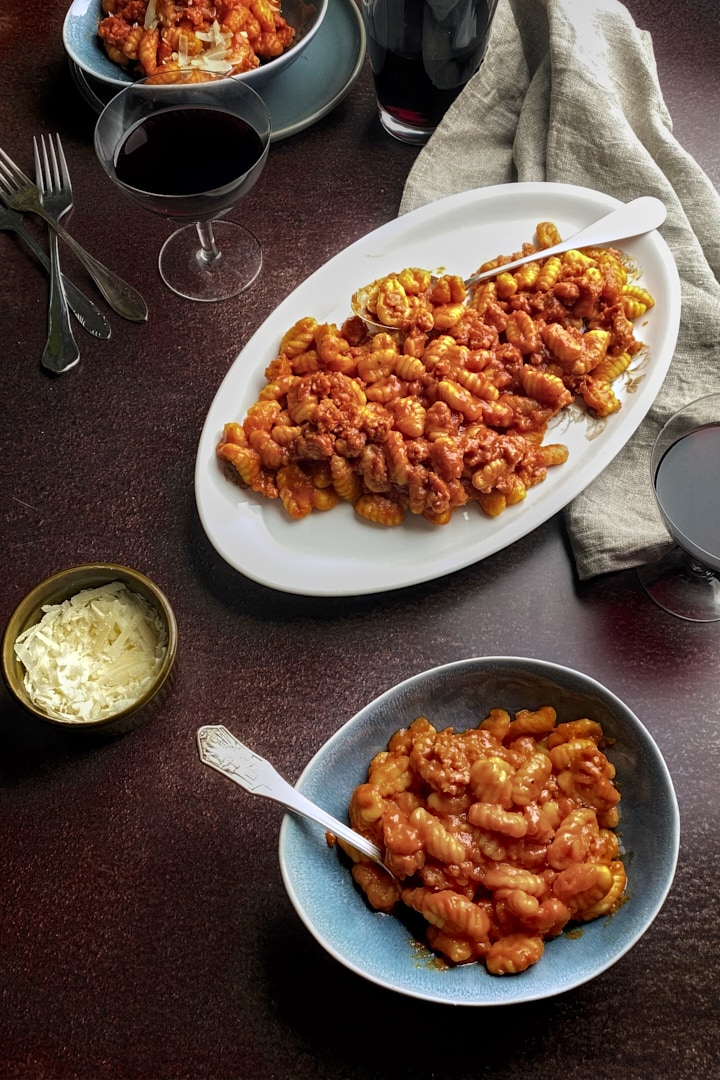
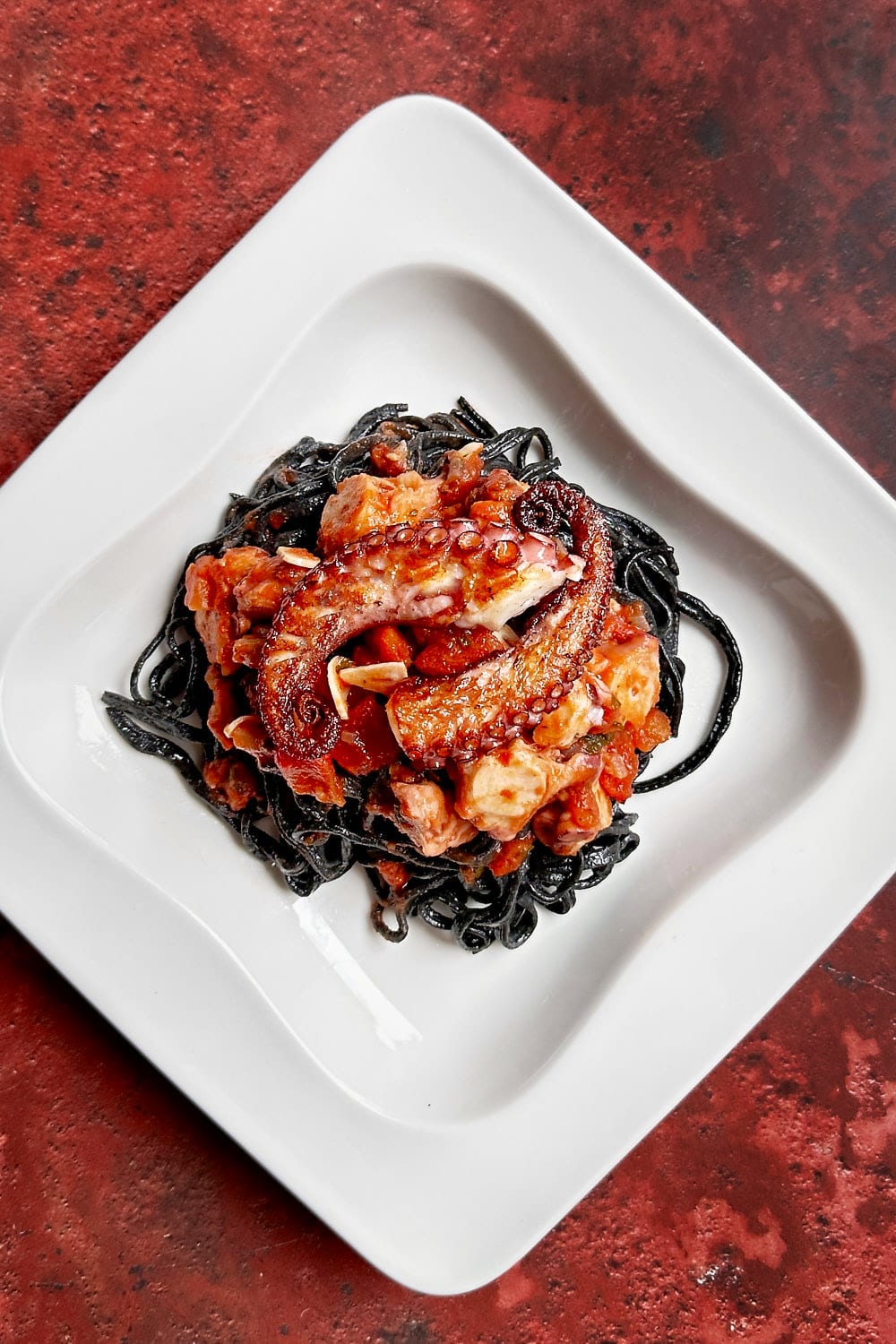
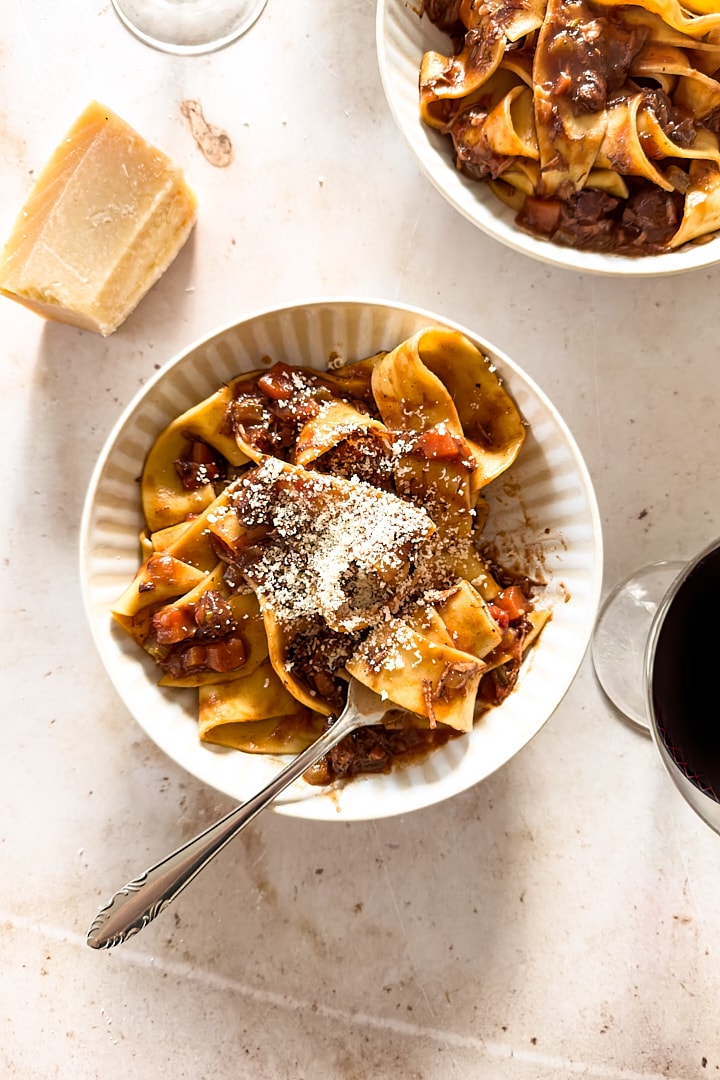


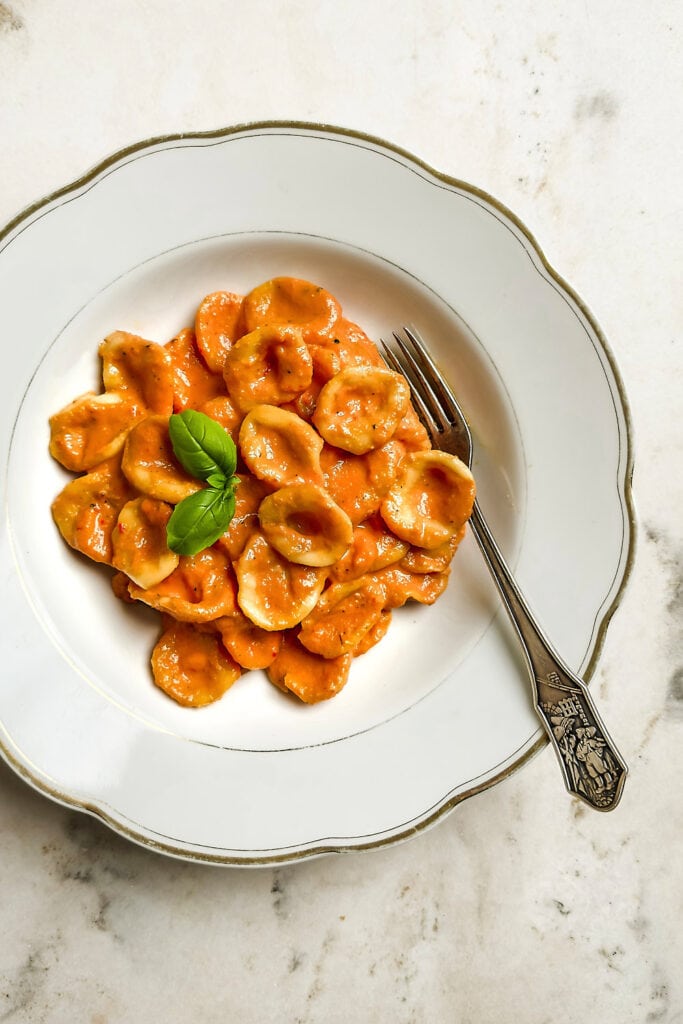
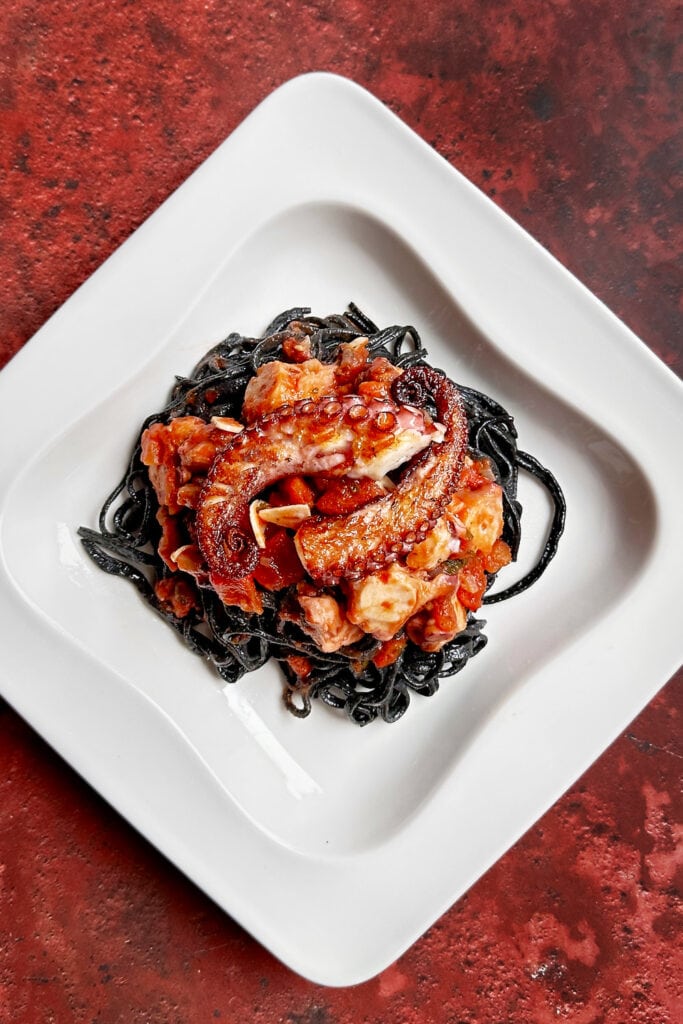
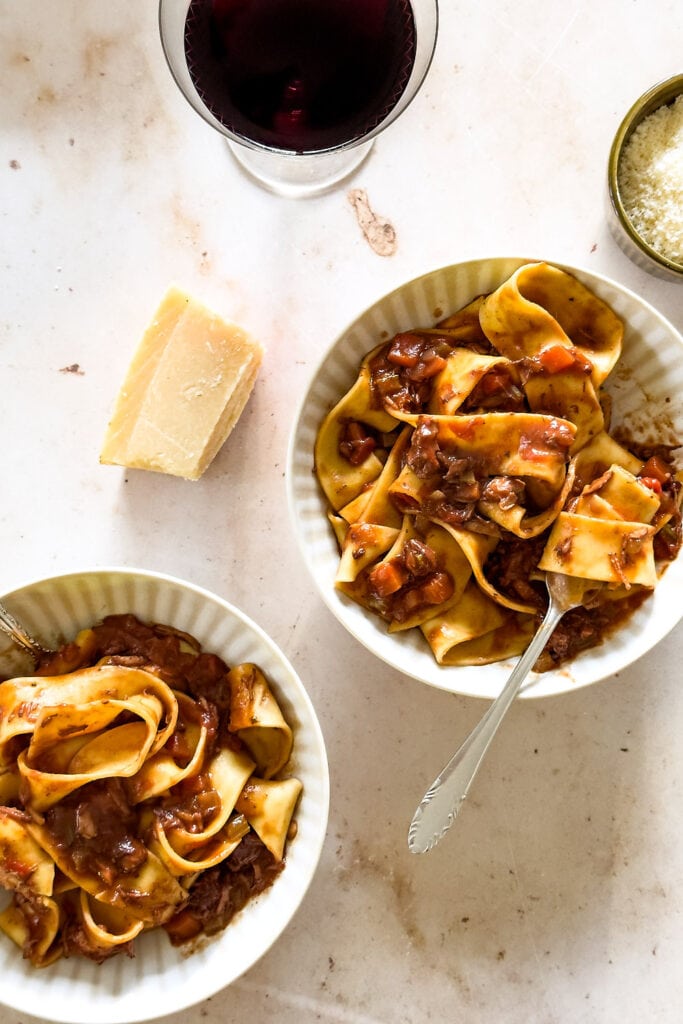
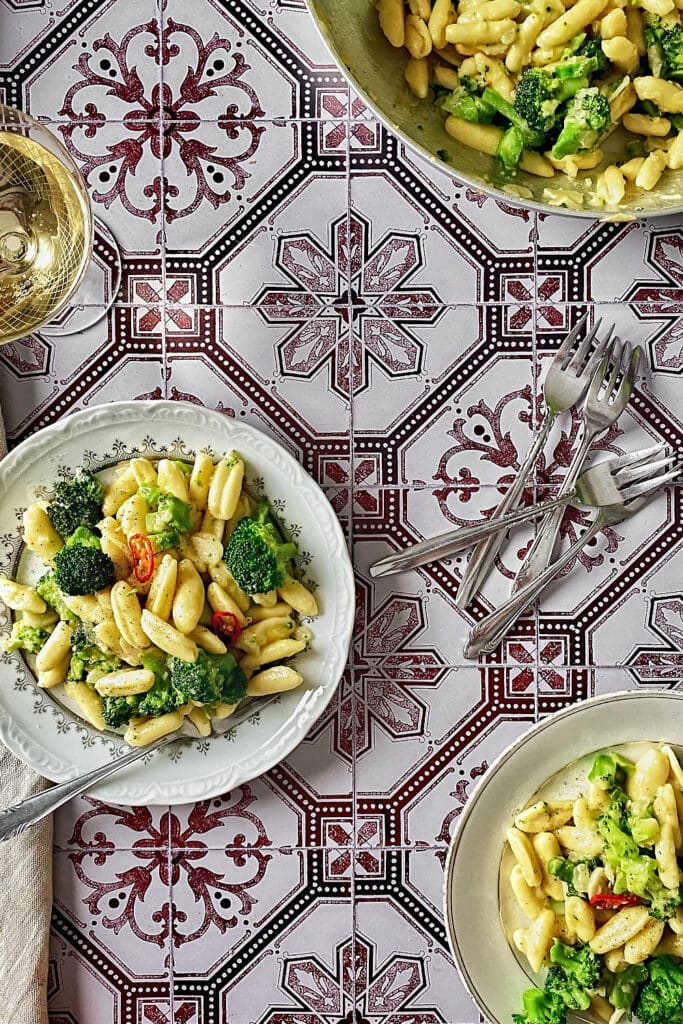
Easy to make and simply delicious
Thank you, Christa! 🙂